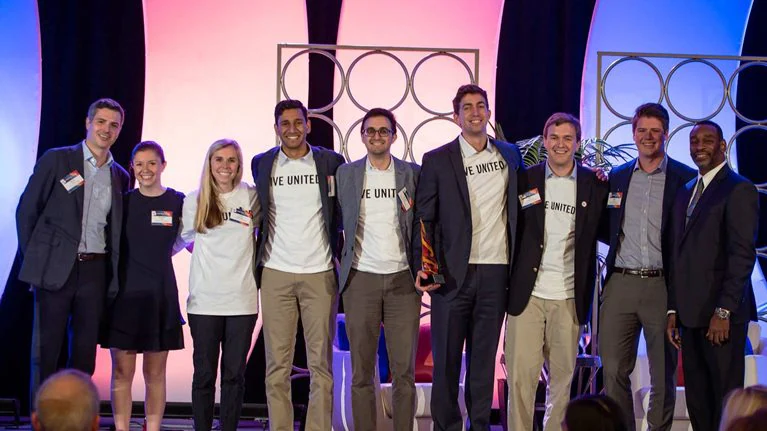United Way of Greater Atlanta has always worked to create communities where children of all backgrounds can thrive and reach their full potential. It’s a difficult mission. Like any city, Atlanta has communities that are affected by poverty and other social challenges. The right answer in one neighborhood might prove ineffective elsewhere.
The organization created the Child Well-Being Index to help address this. A data set that tracks the welfare of the city’s 1.3 million children, the index has been a powerful tool for the organization. But not long ago, United Way leaders wanted to find a better way to use of all of the information the index provides.
They reached out to Steve Reis, a senior partner in McKinsey’s Atlanta office, for help. Specifically, United Way wanted to find new ways to derive insights from the data, measure return on investment, and identify better interventions and new partners. Steve mobilized a team of nine local business analysts who would work on a pro bono basis for the organization. Their work was so well received that United Way recognized McKinsey with its 2019 Volunteerism Champion Award earlier this year.

Our social responsibility
“The work McKinsey did on our Child Well-Being Index has fundamentally changed the way we track our progress and determine what programs are most effective,” says Ginneh Baugh, VP of strategy and knowledge development at United Way. “McKinsey’s work has enabled us to better steer resources where they’re needed most and measure progress over time.”
According to Will Whitehurst, a senior business analyst who is currently on secondment with the Atlanta Committee for Progress, the index takes into account how children, their families, and their communities are faring. It includes figures like the percentage of low-weight births, families with financial instability, and adults without health insurance.

“The biggest challenge United Way faced on this issue,” says Julie Spangler, a business analyst who worked on the project, “was identifying the kind of support and programming youth within each community needed.”
To help United Way get better insights that could fulfill that objective and others, our team created a platform that produces a composite score showing where in the city children are most vulnerable to issues like poor health, school absenteeism, poverty, and homelessness. It has already produced real results.
UPS, for example, worked with United Way to use the index when they were searching for a location for their new Atlanta smart hub, an advanced 1.2 million square-foot ground package processing facility. They strategically chose to place the hub in an area with a low index score, where people lacked access to employment and high-wage potential, in an effort to turn the community around. The UPS center even went so far as to align work shifts with the city’s public transportation schedule, so local residents could easily catch the bus or train home.
“Transportation and housing are some of the biggest expenses for families,” says Ginneh. “Having the ability to ease the burden for people in these communities so they can get to work is significant.”
Pulling data from the index, the McKinsey team has also built an interactive heat map that shows the Child Well-Being Scores of each zip code. This feature lets users see at-a-glance which areas are most at-risk (rendered in red and orange on the map) and double-click to find out what specific child, family, and community measures look like there.
Three years ago, 36 percent of United Way’s funding went to areas in what are now red and orange zones on the map. This year, up to 48 percent of funding goes to those areas.
“This is really powerful for both donors and partner organizations,” says Austin Smith, a McKinsey business analyst and member of United Way team. “Right away they can determine where to direct their efforts and spending.”
The next iteration of the map will include information on youth-education providers, showing which ones are serving children in which neighborhoods. This feature will give United Way a more holistic view of its existing and potential partners across the Atlanta area to ensure kids receive the schooling they need.
The future could be bright for these children, and it’s on each of us to make sure that it will be.
Will WhitehurstMcKinsey business analyst
The Child Well-Being Index’s scoring system also helps measure United Way’s progress. One neighborhood, for example, saw their index score rise from 58.9 to 61.8. That equates to a change in the lives of over 82,000 children in the region living in low or very low Child Well-Being Score neighborhoods. “We’re on track to reaching our goal of improving the lives of 250,000 children by 2027,” says Ginneh.
If the success of the Child Well-Being Index initiative is any indication, that goal is well within this organization’s reach. “It’s been incredible to see the whole Atlanta office really get behind our work with United Way,” says Will. “The future could be bright for these children, and it’s on each of us to make sure that it will be.”